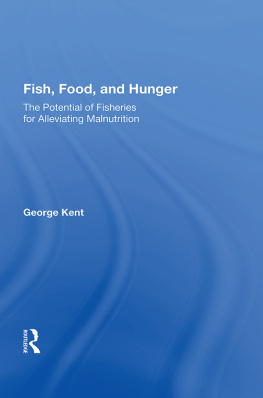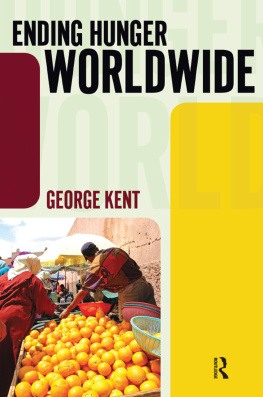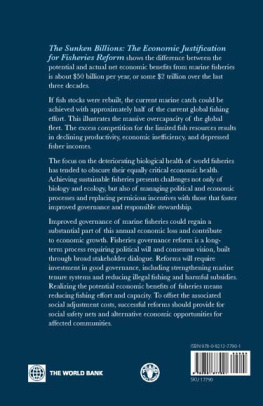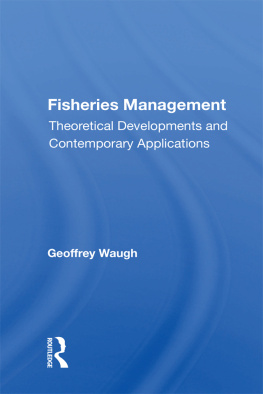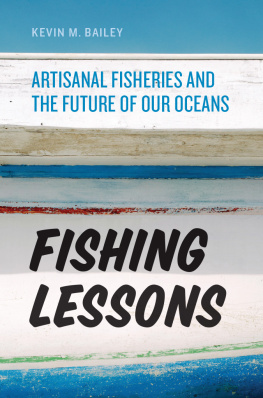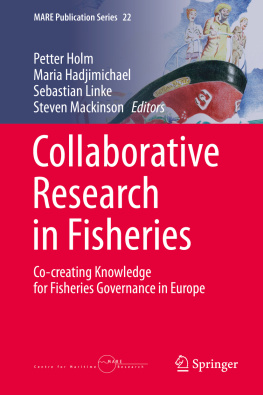About the Book and Author
Because world hunger continues to be a critical issue in contemporary society, alternative food sourcesas well as improved production, processing, and distribution methodsmust be found. In this broadly based and thorough study, the author argues that fish production can make a significant contribution toward improving the food supply of impoverished people, serving as a possible remedy for malnutrition. Dr. Kents suggestions for maximizing the potential of national and international fisheries to alleviate malnutrition are illustrated with case studies from the Philippines, Thailand, India, Southern Africa, and the Pacific Islands.
George Kent is professor of political science at the University of Hawaii and consultant to the Food and Agriculture Organization of the United Nations.
First published 1987 by Westview Press
Published 2018 by Routledge
52 Vanderbilt Avenue, New York, NY 10017
2 Park Square, Milton Park, Abingdon, Oxon OX14 4RN
Routledge is an imprint of the Taylor & Francis Group, an informa business
Copyright 1987 by Taylor & Francis
All rights reserved. No part of this book may be reprinted or reproduced or utilised in any form or by any electronic, mechanical, or other means, now known or hereafter invented, including photocopying and recording, or in any information storage or retrieval system, without permission in writing from the publishers.
Notice:
Product or corporate names may be trademarks or registered trademarks, and are used only for identification and explanation without intent to infringe.
Library of Congress Cataloging-in-Publication Data
Kent, George, 1939-
Fish, food, and hunger.
(Westview special studies in ocean science and
policy)
Bibliography: p.
1. Fish trade. 2. Fisheries. 3. Food supply.
I. Title. II. Series.
HD9450.5.K46 1987 338.37194 876066
ISBN 0-8133-7409-X
ISBN 13: 978-0-367-01391-2 (hbk)
Chapter 1
Introduction
Many observers have suggested that the sea is a bountiful storehouse of food which could be used to help end hunger in the world. The possibilities have sometimes been exaggerated, but there is no doubt that fish and other seafood could be used more effectively. The purpose of this study is to examine ways in which policies might be modified so that fisheries could make a greater contribution to the alleviation of malnutrition.
In 1975 a meeting on Expanding the Utilization of Marine Resources for Human Consumption was sponsored by the Norwegian Agency for International Development (NORAD). Another meeting sponsored by NORAD and the Food and Agriculture Organization of the United Nations (FAO) held in Malaysia in 1982 explored ways in which fuller use might be made of fishery products in developing countries. Then an Expert Consultation on the Role of Fish and Fisheries in World Nutrition, organized by the government of Norway and sponsored by the FAO was held in Oslo in July 1983. I was invited to that meeting because my 1980 book on The Politics of Pacific Islands Fisheries included a chapter on nutritional aspects of fisheries. I was particularly pleased because, although my hosts had not known it, at the time I was writing The Political Economy of Hunger: The Silent Holocaust , which came out in 1984.
The core question at the 1983 Oslo meeting was How can fisheries be managed and developed to be more The FAOs Fisheries Department is responsible for the implementation of the program, and cooperates closely with the FAOs Food Policy and Nutrition Division and the FAO/UN World Food Programme.
In the summer of 1984 I undertook a consultancy with the Fishery Industries Division of FAO to provide background on the major policy issues. This work resulted in a study on existing and potential linkages between national fisheries policies and national nutritional policies, with the Philippines and Thailand as the specific cases under examination. The study reviewed their fisheries and nutrition situations and suggested ways in which policies in these countries might be reoriented to make a better contribution to the alleviation of undernutrition. With the support of the FAO, I did follow-up work directly with Thailands Department of Fisheries in the summer of 1985. I prepared another paper on fisheries-nutrition linkages for an FAO-supported conference held in New Delhi in November 1985 and did follow-up work in India in the summer of 1986. These, together with several other studies I did on the theme, provided much of the material from which this book was prepared.
Fishery products are taken to include finfish and shellfish and the many different food products which can be derived from them. These products can be used to alleviate malnutrition either directly, through their consumption value, or indirectly, through their commodity value. Fishing people who sell their catch to buy other foods use the fish only indirectly for their personal nutrition; for them, the nutritive character of the product they sell is only incidental. In this study the focus is on the use of fish for its direct consumption value, not its commodity value.
Programs for the alleviation of malnutrition might be considered for several different kinds of problematic situations. First, it might be projected that in the long run the supply of particular foods will not grow fast enough to keep up with the demand, resulting in serious shortfalls. Third, programs might be designed to respond to problems of chronic malnutrition, particularly the widespread, continuing malnutrition which affects substantial portions of the populations of many developing countries. This study addresses only the third of these possibilities.
Although others can be malnourished as well, the focus here is on the poor as the socioeconomic group most vulnerable to malnutrition.
This study focuses on a few selected countries and regions, but the intention is to provide background information and guidelines which would be useful anywhere there is some potential for using fisheries products to help in alleviating malnutrition.
regarding the evaluation and design of both fisheries projects and fisheries policies.
. Frederick W. Bell, Food from the Sea: The Economics and Politics of Ocean Fisheries (Boulder, Colorado: Westview Press, 1978); Clarence P. Idyll, The Sea Against Hunger: Harvesting the Oceans to Feed a Hungry World , Revised edition (New York: Thomas Y. Crowell Co., 1978); Claudia Carr and James Carr, World Hunger: A Solution from the Sea? Environment , Vol. 22, No. 1 (January 1980), p. 3.
. Food and Agriculture Organization of the United Nations, Fishery Products and the Consumer in Developing Countries , FAO Fisheries Report No. 271 (Rome: FAO, 1982).
. Food and Agriculture Organization of the United Nations, The Potential of Fisheries in Alleviating Undernutrition: Report of the Discussions and Conclusions of an Expert Consultation on the Role of Fish and Fisheries in World Nutrition (Rome: FAO, 1983).
. FAO World Conference on Fisheries Management and Development, Draft Strategy for Fisheries Management and Development and Associated Programs of Action (Rome: FAO, 1984).
. Food and Agriculture Organization of the United Nations, Report of the FAO World Conference on fisheries Management and Development, Rome 27 June to 6 July 1984 (Rome: FAO, 1984), pp. 50-52.

